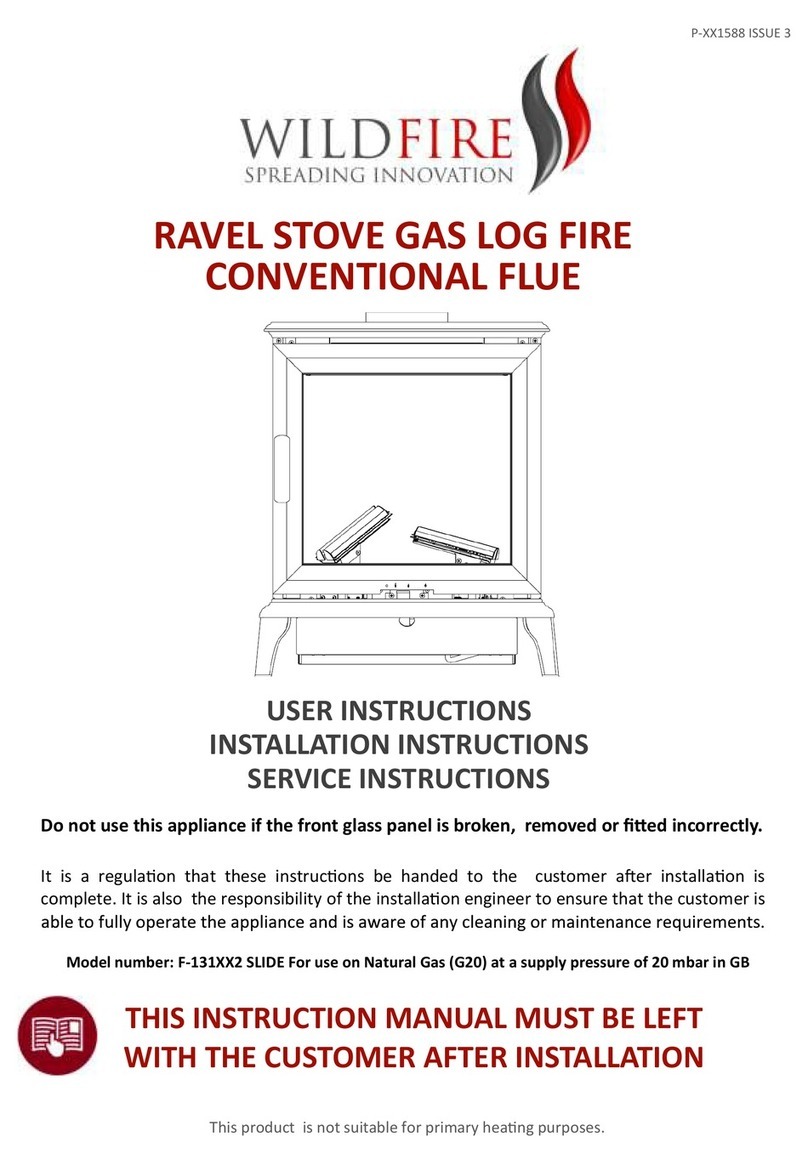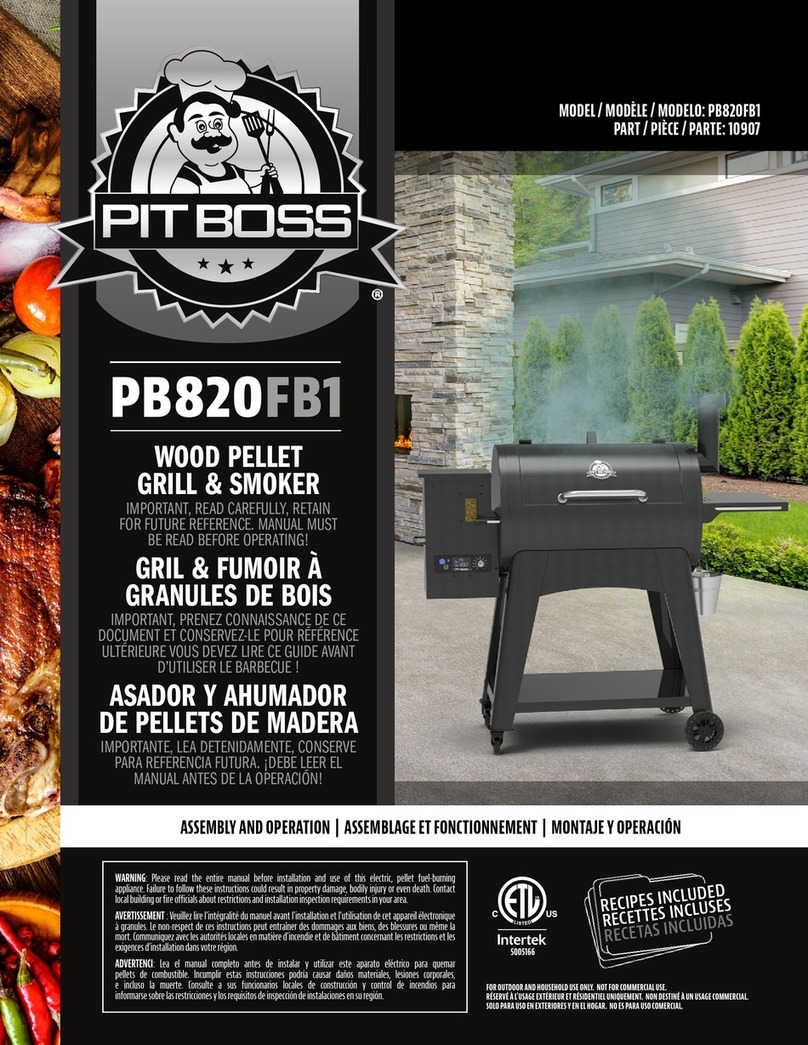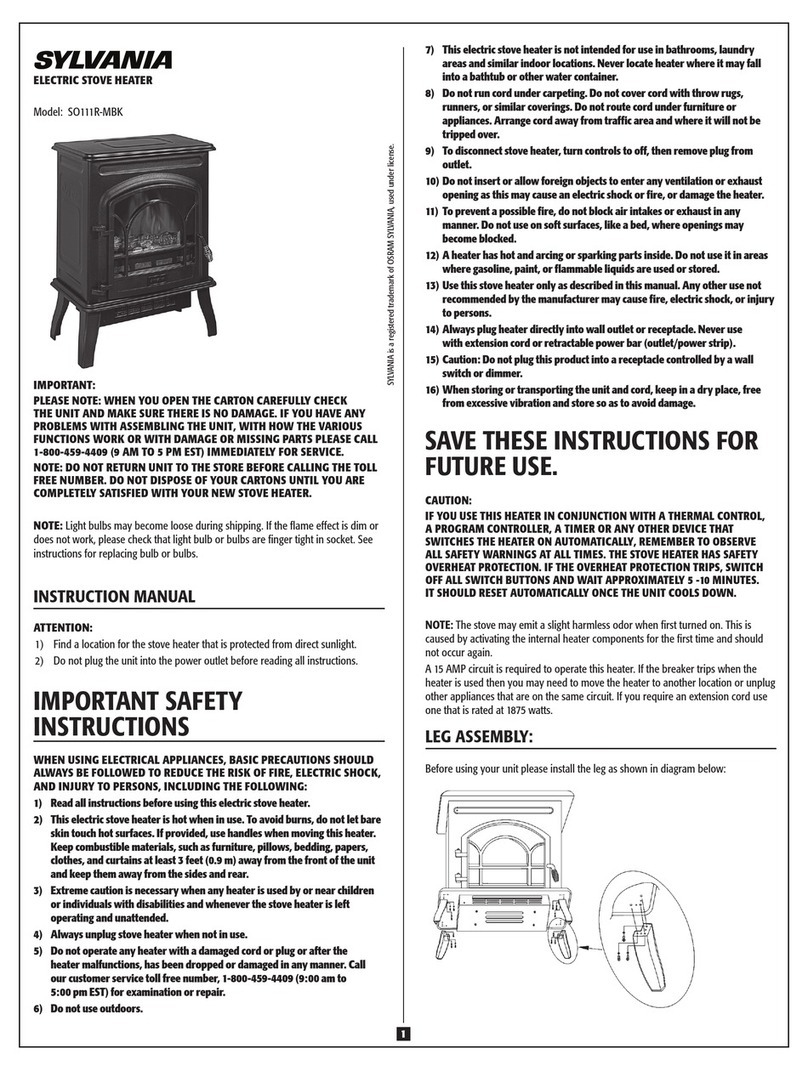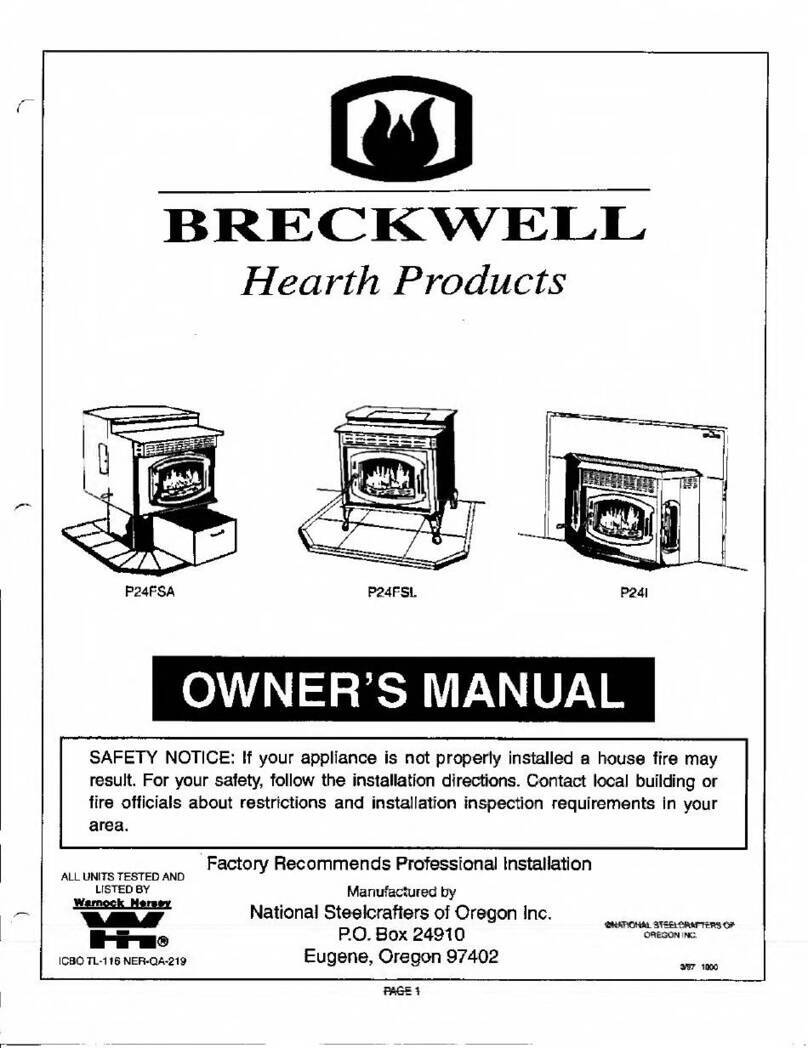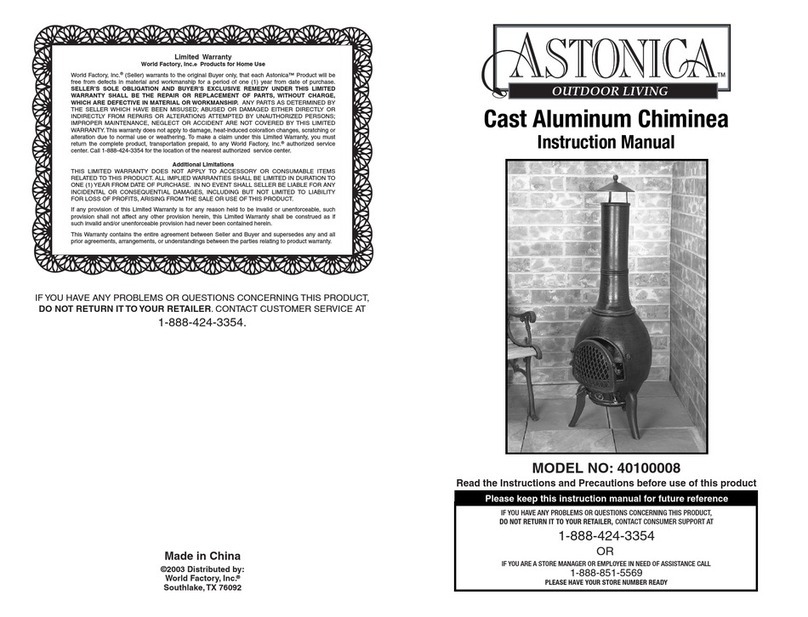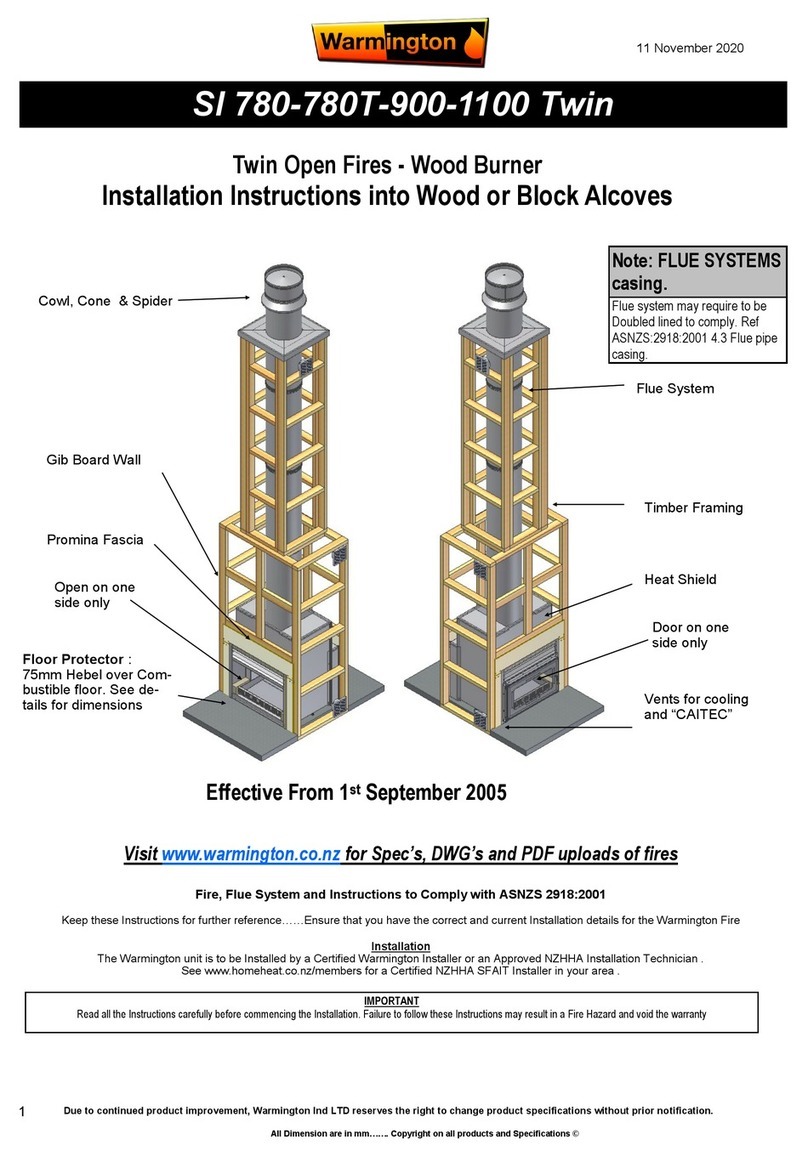11 March 2020
2
For correct operation of your wood fire - follow these guidelines:
Burn control and operation:
The air intake disc on the door controls the amount of air drawn into the stove & thus the combustion rate.
• When lighting the stove, the air control should be fully open (turn the air control anti-clockwise).
• Place paper or fire lighters into the base of the firebox.
• Arrange kindling on top of paper or firelighters, allowing air to move easily through the kindling.
• Light the fire around the base to ensure good ignition of paper or firelighters.
• Leave the door ajar 5 to 10 mm to aid with speedy ignition of the fire.
• When the fire is happily burning the main fuel loads can be placed into the fire, from the front to the rear in a lined pattern,
ensuring that the flames can easily move through the fuel load (max tested fuel load approx. 2.2kg).
• Close the door to ensure a seal to the firebox. Once the fire is fully established and burning brightly the air supply can be
considerably reduced to control heat output (and fuel consumption). Note, the air control is designed such that even when
fully closed some air still enter the firebox. This keeps unwanted flue emissions to a minimum.
Removing ash:
After using your fire for a few weeks, you will find ashes accumulate in the firebox. The ash can be removed easily through the fire door
when the fire is completely out. The amount of charcoal in the ash is often a good indicator of how well you are operating the fire. If there
is no charcoal and only very fine ash then you are doing an excellent job. If there is a lot of charcoal you may be turning the combustion
air down to soon after refueling, or not raking the charcoal to the combustion air inlet, or turning the combustion air down too low to sup-
port efficient combustion, or all of the above. Warmington wood-burning fires work best when a small amount of ash is left (approximately
25mm deep) in the firebox after cleaning as this aids with stable burning. The ash should be placed in a non-combustible container with a
tightly fitting lid and moved outdoors immediately to a location clear of combustible materials.
Cooking:
Because the top of the fire is in direct contact with the flame, it offers a large cooking surface. Ideal for entertaining at home/holiday
homes or farm cottages. If spillage occurs, clean the surface with a soft cloth and dish washing liquid and avoid scratching the surface.
Storing/drying fuel:
The space below the firebox can be used as a wood storage and drying area. Damp wood is dried naturally while it is stored. Use dry
timber preferably cut and stored under cover from the previous year .
PURCHASING THE FIREWOOD
The quality of the firewood you burn can have a dramatic effect on the efficiency and operation of the heater. The main factors that
affect the burning characteristics of firewood are moisture content, tree species and piece size.
The moisture content of the wood affects the rate at which burns and the efficiency of combustion. When trees are cut, wood moisture
content ranges between 35 and 60 percent by weight. If you attempt to burn wood this wet, it will be hard to ignite, slow to burn and
will hiss and sizzle in the firebox. A lot of energy will be consumed in boiling off the excess water that the efficiency of combustion and
the heat to your home will be low, condensation and corrosion may be occurring in the flue and smoke may be causing problems to
your neighbours. Properly seasoned wood ignites readily and burns efficiently.
Firewood should be cut and split in the early spring and stacked under cover, with good ventilation, to be ready for burning when re-
quired. Look and check for cracks in the end grain as a sign of dry wood. The stacks of firewood should be in an open area so that air
can circulate between them. During the summer, as warm breezes flow through the stacks, carrying away the evaporating water, the
moisture content of the wood will fall to around 20 percent. At this moisture content the wood is ready for burning.
Although the energy content of dry wood per kilogram is almost the same regardless of species, softwoods and hardwoods burn differ-
ently because of differences in density. Softwoods, such as pine, are less dense than hardwoods like gums, Manuka or ironbark. A
denser wood will produce a longer-lasting coal bed, while a less dense wood will bring a fire to an optimum burning temperature more
quickly.
The size of the firewood pieces affects the rate of combustion. Larger pieces ignite and release their energy more slowly than small
pieces. Smaller pieces are better for short, hot fires and larger pieces are preferable for extended firing cycles. In general, commercial
firewood dealers produce firewood in larger pieces than modern wood-burning appliances can handle. It is often necessary to split
some of the wood again before using it.
Firewood harvesting can have an effect on native woodlands and a variety of threatened species. Dead standing and fallen timber
provides habitat for numerous species of animals and birds. Wood heater operators should be encouraged to be sensitive about the
source of their firewood. If collecting it privately, operators should leave some dead wood behind as it provides habitat for birds and
animals.

